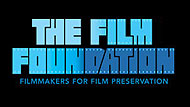

“If you’re going to kill somebody, do it simply,” says Johnnie Aysgarth.
Alfred Hitchcock’s 1940 Best Picture Oscar winner Rebecca was the first film he directed in the U.S. after having spent over 15 years making films in the U.K.  The following year brought two new Hitchcock films: first was a marriage comedy called Mr. and Mrs. Smith, and then the second one, Suspicion, would reteam him with Joan Fontaine, his leading lady from Rebecca, and mark the first of four fruitful collaborations with Cary Grant. I got a chance to see Hitchcock’s Suspicion on the big screen at the Museum of the Moving Image in
The following year brought two new Hitchcock films: first was a marriage comedy called Mr. and Mrs. Smith, and then the second one, Suspicion, would reteam him with Joan Fontaine, his leading lady from Rebecca, and mark the first of four fruitful collaborations with Cary Grant. I got a chance to see Hitchcock’s Suspicion on the big screen at the Museum of the Moving Image in  New York City 12 years ago as part of a Cary Grant retrospective with each weekend highlighting a different director collaboration (Howard Hawks, George Cukor, Leo McCarey, Stanley Donen, and Hitchcock), and it was a suspenseful picture that I enjoyed very much. This review of Suspicion is my entry in the Film Noir Blogathon hosted by The Midnite Drive-In.
New York City 12 years ago as part of a Cary Grant retrospective with each weekend highlighting a different director collaboration (Howard Hawks, George Cukor, Leo McCarey, Stanley Donen, and Hitchcock), and it was a suspenseful picture that I enjoyed very much. This review of Suspicion is my entry in the Film Noir Blogathon hosted by The Midnite Drive-In.
1941’s Suspicion follows a young heiress who marries a charming gentleman but, after a number of bizarre events, soon becomes convinced that he might be  planning to kill her. Hitchcock brought together a terrific cast that included Grant (as Johnnie Aysgarth), Fontaine (as Lina McLaidlaw), Cedric Hardwicke (as General McLaidlaw), Nigel Bruce (as Beaky), May Whitty (as Martha McLaidlaw), Isabel Jeans (as Mrs. Newsham), Heather Angel (as Ethel),
planning to kill her. Hitchcock brought together a terrific cast that included Grant (as Johnnie Aysgarth), Fontaine (as Lina McLaidlaw), Cedric Hardwicke (as General McLaidlaw), Nigel Bruce (as Beaky), May Whitty (as Martha McLaidlaw), Isabel Jeans (as Mrs. Newsham), Heather Angel (as Ethel),  Auriol Lee (as Isobel Sedbusk), Reginald Sheffield (as Reggie Wetherby), and Leo G. Carroll (as Captain Melbeck). Grant brings enough charm and shadiness as Johnnie, who may or may not be a killer. Best Actress Oscar winner Fontaine is timid, paranoid, and distrustful as Lina, who believes her husband might be a killer. Bruce is a delight as Johnnie’s old friend Beaky, who acts as comic relief and accidentally feeds Lina’s paranoia.
Auriol Lee (as Isobel Sedbusk), Reginald Sheffield (as Reggie Wetherby), and Leo G. Carroll (as Captain Melbeck). Grant brings enough charm and shadiness as Johnnie, who may or may not be a killer. Best Actress Oscar winner Fontaine is timid, paranoid, and distrustful as Lina, who believes her husband might be a killer. Bruce is a delight as Johnnie’s old friend Beaky, who acts as comic relief and accidentally feeds Lina’s paranoia.
The screenplay by Samson Raphaelson, Joan Harrison, and Alma Reville adapts Anthony Berkeley’s 1932 novel Before the Fact (a crime novel that tells its story from the perspective of the victim), lightening the tone of the dark novel while  making several changes (the changing of the book’s ending may have been studio-mandated, but the new ending still works). Despite all the changes, Hitchcock’s style still flourishes through (my favorite sequence is Grant bringing up the illuminated glass of milk). It also successfully transitions from light romance to psychological thriller. Harry Stradling’s black-and-white cinematography reflects the tone of the film, mixing the lightness with a nourish
making several changes (the changing of the book’s ending may have been studio-mandated, but the new ending still works). Despite all the changes, Hitchcock’s style still flourishes through (my favorite sequence is Grant bringing up the illuminated glass of milk). It also successfully transitions from light romance to psychological thriller. Harry Stradling’s black-and-white cinematography reflects the tone of the film, mixing the lightness with a nourish  look. William Hamilton’s editing moves the film at a suspenseful pace that slowly builds towards its surprising climax. Franz Waxman delivers an Oscar-nominated score that emphasizes romance and dramatic tension. Hitchcock’s Best Picture Oscar nominee Suspicion is another early film of his where a leading character may or may not be wrongfully accused or suspected of a crime, and it also holds the distinction of being the only Hitchcock film to feature an Oscar-winning performance (Fontaine).
look. William Hamilton’s editing moves the film at a suspenseful pace that slowly builds towards its surprising climax. Franz Waxman delivers an Oscar-nominated score that emphasizes romance and dramatic tension. Hitchcock’s Best Picture Oscar nominee Suspicion is another early film of his where a leading character may or may not be wrongfully accused or suspected of a crime, and it also holds the distinction of being the only Hitchcock film to feature an Oscar-winning performance (Fontaine).






I’ve only seen this once, but clearly, I need to revisit it. I do remember the milk scene (so iconic) and a couple other bits, but not much overall. Time for a rewatch! Thanks for the nudge — I’ll see if my library has this.
You’re welcome!
I’m part of the faction that wishes that original ending existed…it just seems so perfectly suited to the rest of the film, and makes that cool ‘glass of milk’ scene all that more important. And I never realized that only one Hitchcock actor/actress ever won an Oscar! Thanks for the insights!
You’re welcome!
Interestingly enough, I am running through a collection of Old Time Radio shows, and just today I listened to the CBS Academy Award Theater version of this with Ann Todd in the Fontaine role. The first half came off more like a comedy, which I gather the movie does too to some extent. I know my library has this. Next trip I’ll see about checking it out. Good review. Thanks for joining the blogathon.
You’re welcome! Glad to be a part of it.
Yes, that scene with Cary Grant bringing the “illuminated” milk up the stairs is always the first thing I remember about this film.
The second thing I always remember is the contrived ending, courtesy of studio interference. It’s always such a disappointment, but it doesn’t necessary take away from the rest of this fabulous film.
I still think the contrived ending works; I actually prefer it to the book’s ending. I definitely agree about the illuminated milk sequence; it’s short but so unforgettable.
Great film! You are so right, Hitchcock was a master of not only suspense but of intertwining light and dark elements into one elegant film tapestry. One of Cary Grant’s most interesting roles…is he or isn’t he?…and the rest of the cast is equally powerful!
Thanks! It sure is a hell of a film.
I so agree with Caftan Woman – this film absolutely fascinates me, though I still find the ending frustrating…but maybe the ending is part of the fascination. 🙂 That must have been wonderful to see it on the big screen! That’s a good point about how well the film transitions from romance to thriller.
Thanks!
Slowly, but surely, “Suspicion” has worked its way into my favourite Hitchcock pictures. It bored me in younger years! It fascinates me today.